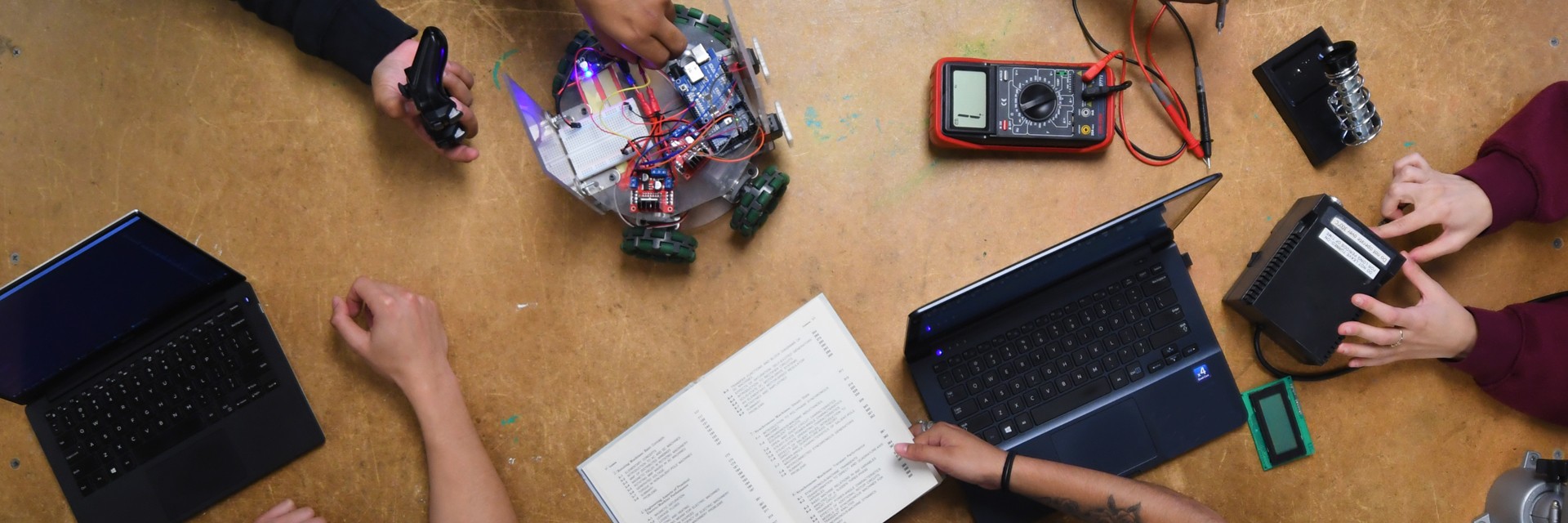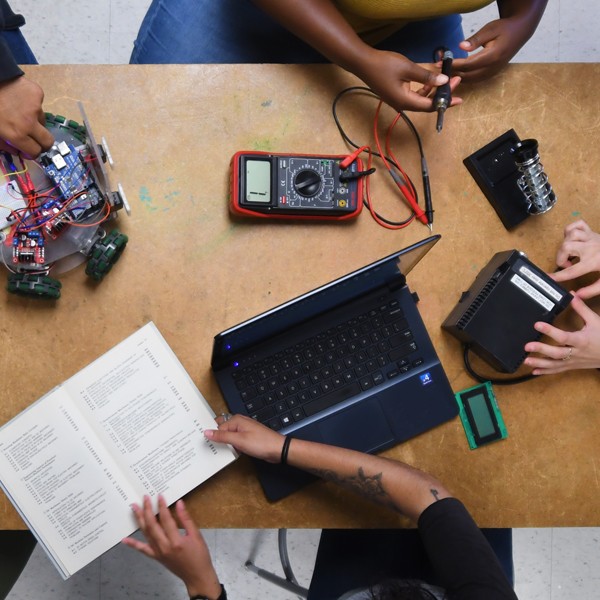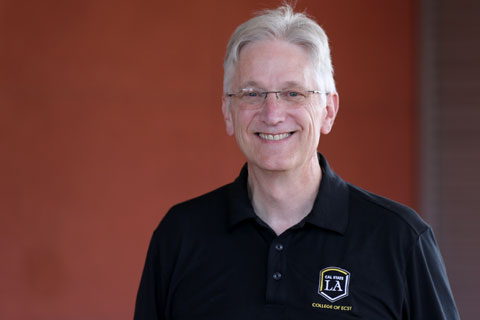Mike Thorburn, Director, ECST Capstone Senior Design
Capstone Senior Design Projects Rise to the Challenge of COVID-19
Capstone senior design projects are challenging enough without the constraints imposed by a global pandemic. These student-led projects typically give seniors a chance to put their theoretical skills into practice by working in teams to solve a real-world engineering or technology problem defined by a corporate client. The teams, consisting of four or five engineering, computer science, or technology students, a faculty advisor, and often a technical liaison from the sponsoring company, are required to deliver a product—a prototype, software program, technical design, or working algorithm—by the end of the academic year.
In the early spring of 2020, ECST seniors were working hard to complete their projects on time. Then came the COVID-19 shelter-in-place order in California.
“It was a train wreck,” says Mike Thorburn, Director of ECST’s Capstone Program. “Without warning, students were told to ‘go home and don’t come back.’ They had no chance to finish their projects.”
Instead, students were asked to write up the status of their projects and report on whatever results they had. “We were incredibly flexible,” says Thorburn. “We had to be.”
Knowing there would be no end to the pandemic by the start of the fall semester, Thorburn had to revamp the Capstone program in time for this academic year’s seniors.
“We had to fundamentally change the make-up of the whole program,” says Thorburn. “My predecessor, Ted Nye, was a superman who created an amazing program that gave student teams the chance to work together in our Makerspace and build prototypes. That couldn’t happen this year. But we didn’t want students gathering at their homes either. So, we needed projects that students could do on their own and remotely for the entire year.”
Thorburn describes himself as more of an “analytical guy” than “a lab guy.” With a Ph.D. in electrical and computer engineering, he had a long career in space science and electronics, capped by two years as Division Head for the Department of Engineering and Project Manager at the Joint ALMA Observatory in Chile. The astronomical observatory is the most complex on Earth. Thorburn returned to the United States in 2013 to work for AT&T Satellite Communications. Periodically throughout his corporate career, he also taught undergraduate math and statistics classes and graduate classes in engineering at various colleges and universities.
In 2017, while still at AT&T and considering what he wanted to do next, Thorburn met Dean Emily Allen. Thorburn told her he was considering teaching high school students. Instead, Dean Allen invited him to become a lecturer in MATLAB and Numerical Techniques and serve as Ted Nye’s deputy on the Capstone Senior Design Project team. Thorburn became Director of the program starting in the 2019-2020 academic year.
Based on his background and areas of expertise, and to meet the challenges of Capstone projects during a pandemic, Thorburn decided to emphasize projects that involve computer-aided design, analysis, modeling, and simulations. “We didn’t have a choice, but I believe these types of skills are also valuable for students to learn,” he says. “Employers these days expect engineering students to have computer skills and proficiency at the abstract as well as physical aspects of design.”
Of the pandemic-revamped Capstone program, Thorburn acknowledges that some of the students are disappointed they can’t work in-person with their peers and industry advisors. “Some feel like, ‘Gee, it would have been nice to build something,’” he says.
Still, Thorburn emphasizes that despite the challenges, students have been resilient and have found creative ways to get the most out of their Capstone experiences. For example, they still share and work in teams virtually, using applications such as Zoom, Discord, and Slack.
“By the time these students get to their senior year, they’ve already accomplished a lot,” says Thorburn. “They’re finishing up their degrees in engineering, computer science, or technology and most of them are looking for jobs. I don’t want to overstate my contributions… but it’s great to have an opportunity to help them accomplish even more.”
This year there are almost 550 senior students in our five departments, working on 70 capstone projects, each with a faculty or volunteer industry advisor. A small set of examples of capstone projects this year are:
- Dr. Jim Kuo is leading a mechanical engineering team for client JPL to design a fully deployable wind turbine to power potential Venus missions.
- Dr. Paul Liu is leading an Industrial Technology team to design a mask-making jig for people in remote areas.
- An Electrical Engineering team led by Dr. Debbie Won is developing a mobile blood glucose model and simulator to address health disparities in Type 2 diabetes prevalence and secondary complication rates.
- Dr. Navid Amini is leading a Computer Science project sponsored by Vodafone using machine-learning techniques to find unnoticed patterns and trends in COVID-19 data.
- A project sponsored by Edison International and led by Dr. Masood Shahverdi is looking at load balancing for renewables in California’s bulk power system.
- SoCal Gas is sponsoring two projects, led by Dr. David Blekhman and Dr. Arezoo Khodayari, that look at the resiliency of our H2-generating station.
- Civil Engineering teams are designing a storage and conveyance system that supports mining operations while minimizing environmental impacts in Riverside County in a project led by John Shamma, Howard Lum and Jason Song, and sponsored by Aztec Engineering, Inc.


